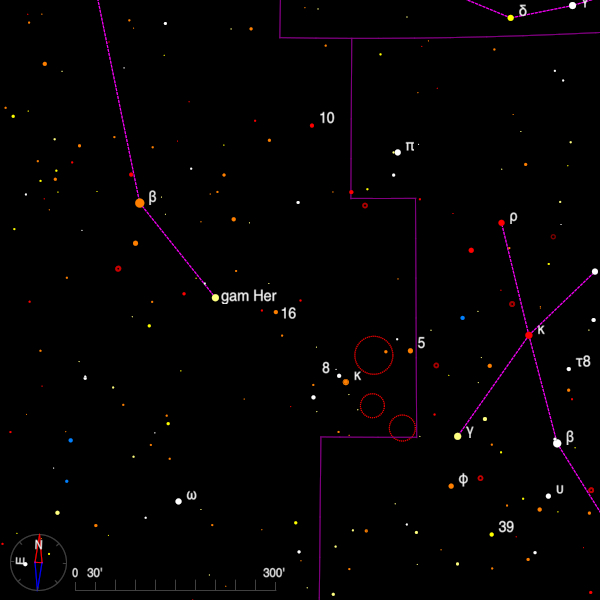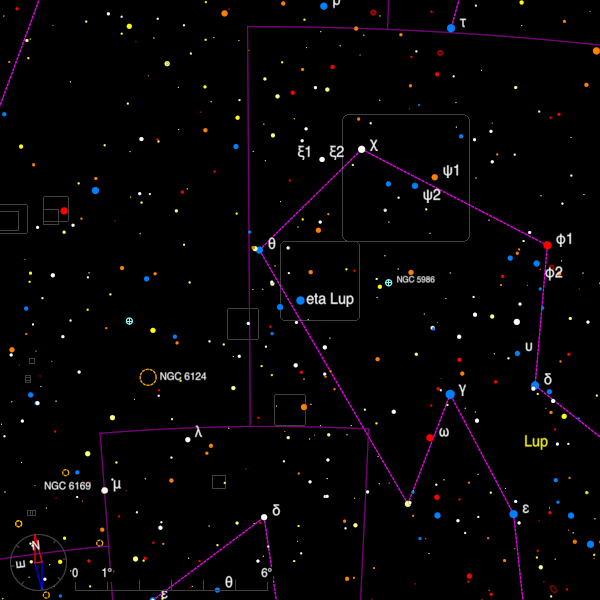June 2022 - Double Star of the Month
Gamma Herculis (16 21 55.24 +19 09 10.9) appears in William Herschel's first double star catalogue as H V 19. Gamma is easily found as it sits just 3 degrees SW of the most south-westerly star, beta, in the Keystone of Hercules.

It is a late-A giant star of magnitude 3.8 and in 1780 Herschel found a magnitude 10 companion at 251 degrees and 41".8. By 2013 the position angle had reduced to 226 degrees and the separation was 43".3. This change is due entirely to the difference in proper motions. The Gaia satellite finds the primary star is 193 light-years away whilst the companion is more than 1,770 light-years distant. An additional optical companion, of V = 13.3, can be found at 298 degrees and 82" from B.
The Washington Double Star Catalog (WDS) states that A is a spectroscopic binary, but it does not appear in the Ninth Catalogue of Spectroscopic Binaries (SB9), compiled by the late Dr. Dmitri Pourbaix. Additionally an infra-red survey has revealed an object 8" from A which has a K magnitude of 8, and thus a V magnitude of perhaps 10-11. Whether it is connected to A is not known.
Eta Lupi (16 00 07.33 -38 23 48.1) is a hot, early B-type star of magnitude 3.4 which lies in Lupus, 16 degrees due south of delta Sco, the middle of the three bright stars in the Scorpion's head. Eta is part of the Upper Centaurus - Lupus association and thus has a similar distance (460 light-years) and proper motion to a group of stars in the neighbourhood.

The WDS shows three companions, two of which have similar parallaxes to eta, and all of which appear white in the eyepiece. The B component is magnitude 7.5 at a distance of 14" and position angle 19 degrees, a relative position which has changed little since the pair were first noted by Rumker from Parramatta. C is magnitude 9.4 at 115" and PA 248 degrees. This star was also noted by Rumker who appears to have estimated a distance of 1 arc-minute but this may be in error (possibly a misprint for 2 arc-minutes?) as the star moves through space together with the brighter components. The star listed in the WDS as ANT 2 AD (the designation refers to Rainer Anton who measured the previously uncatalogued component D in 2007) does not appear to belong to the association and is almost four times more distant. It can be found at 293 degrees and 136".
Searching the Gaia EDR3 catalogue within a radius of 200 arc-seconds from eta shows a magnitude 14 star which also moves with, and is equally distant from us, as A, B and C, and which can be found at 290 degrees and 118".
Bob Argyle - Double Star Section Director